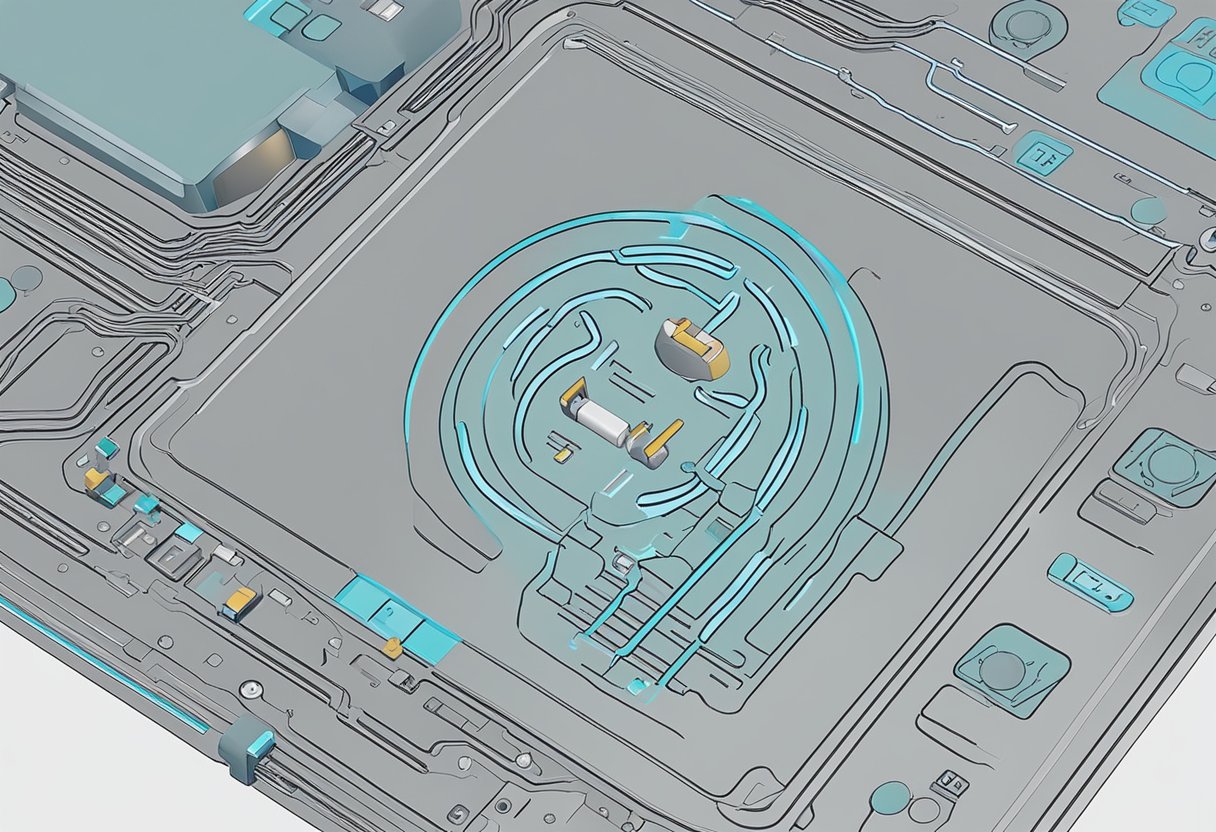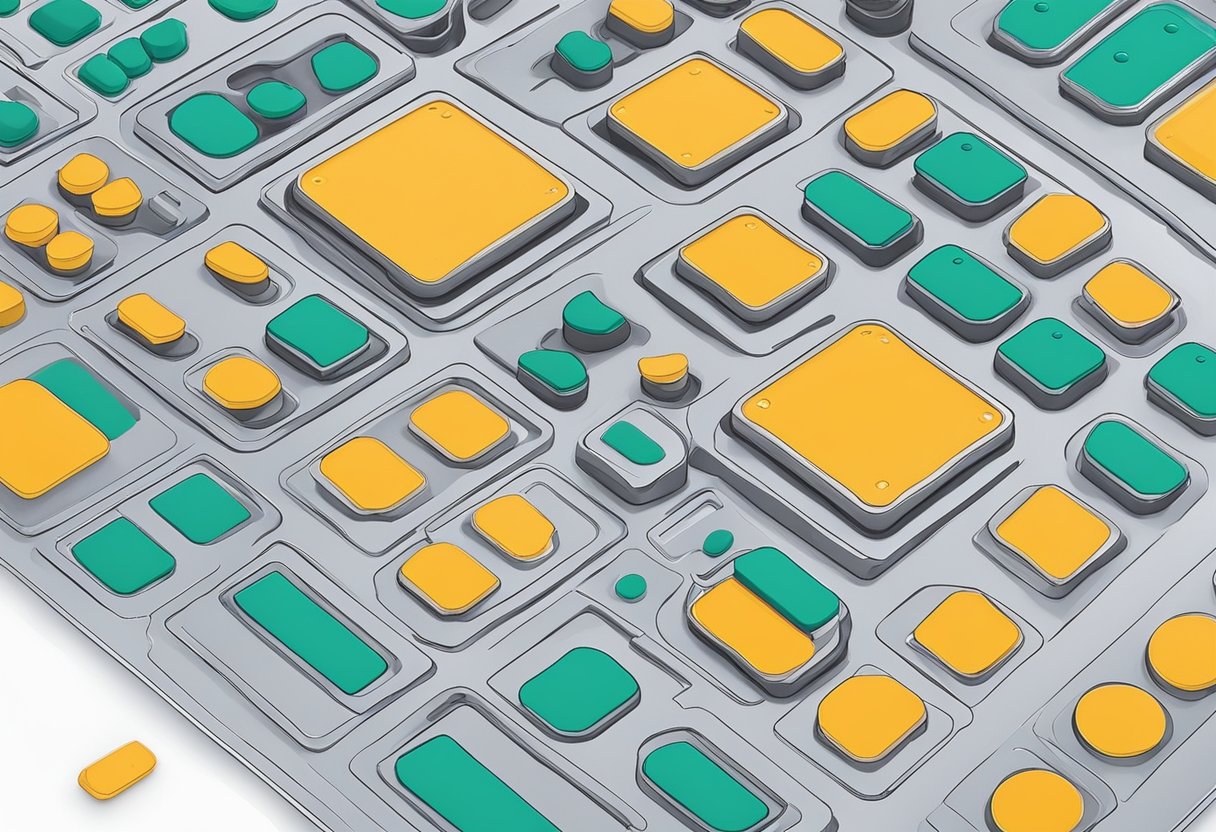Contact
Write to Us And We Would Be Happy to Advise You.
Do you have any questions, or would you like to speak directly with a representative?
By peter
A silicone membrane switch is an electrical switch that is activated by the user pressing on a silicone keypad. It is commonly used in consumer electronics, medical devices, and industrial equipment. The switch is made up of several layers of materials, including a silicone rubber keypad, a printed circuit board, and a layer of conductive ink.

The silicone rubber keypad is the top layer of the switch and is responsible for providing the user interface. It is made from a silicone elastomer that is molded into the desired shape and then coated with a conductive material. The conductive material allows the switch to detect when the user has pressed on a particular area of the keypad. The printed circuit board is located beneath the keypad and contains the electrical circuitry that controls the switch. It is made from a thin sheet of insulating material, such as fiberglass, that has been coated with a layer of conductive material. The conductive material is etched into the shape of the electrical circuit and is used to connect the switch to the device it is controlling.
The layer of conductive ink is located between the silicone rubber keypad and the printed circuit board. It is used to create a connection between the two layers when the user presses on the keypad. When the user presses on a particular area of the keypad, the conductive ink creates a connection between the two layers, allowing the electrical circuit to be completed. This completes the electrical circuit and activates the switch.

Silicone membrane switches are an essential component of many electronic devices, from medical equipment to industrial machinery. In this section, we’ll cover the basics of silicone membrane switches, including their composition, materials, and design principles.
Silicone membrane switches are made up of several layers of materials, each with a specific function. The top layer, or graphic overlay, is typically made of silicone or polyester and serves as the user interface. The second layer, or adhesive layer, attaches the graphic overlay to the third layer, the spacer layer. The spacer layer is made of polyester or polycarbonate and contains the switch contacts, which are typically made of silver or carbon.
The bottom layer, or circuit layer, is made of polyester or polyimide and contains the conductive traces that connect to the switch contacts. The circuit layer is attached to a printed circuit board (PCB) or flexible circuit, which connects the switch to the device’s electronics.
Silicone membrane switches can come in a variety of shapes and sizes, depending on the device’s requirements. The design of the switch is critical to its functionality and durability. Here are some design principles to keep in mind when designing a silicone membrane switch:
By following these design principles, you can ensure that your silicone membrane switch will function reliably and provide a positive user experience.

Silicone membrane switches are widely used in various electronic devices due to their durability, flexibility, and low cost. The manufacturing process of silicone membrane switches involves several steps, including printing and cutting, and assembly.
The printing and cutting process is crucial for the production of high-quality silicone membrane switches. The first step is to print the circuit design onto a transparent polyester film using conductive ink. This process is typically done using a screen printing machine that ensures precise alignment and accurate ink deposition.
After printing, the polyester film is laminated onto a silicone rubber layer to create the top layer of the membrane switch. The silicone rubber layer is then laser cut to create the necessary openings for the switch buttons. The laser cutting process ensures clean and precise cuts that are essential for the proper functioning of the membrane switch.
The assembly process involves bonding the various layers of the silicone membrane switch together to create a single unit. The layers typically include the top layer with the circuit design, an adhesive layer, and a bottom layer with a conductive contact pad. The adhesive layer is used to bond the top and bottom layers together and create a seal that protects the circuit from environmental factors such as moisture and dust.
The conductive contact pad on the bottom layer is typically made of carbon or silver ink and is used to complete the circuit when the switch button is pressed. The contact pad is created using a screen printing machine to ensure accurate deposition of the conductive ink.
In conclusion, the manufacturing process of silicone membrane switches involves several steps, including printing and cutting, and assembly. Each step is crucial for the production of high-quality membrane switches that are durable, flexible, and cost-effective.
Silicone membrane switches are available in two types: tactile and non-tactile. Tactile switches provide a physical response when activated, giving the user a sense of confirmation. Non-tactile switches do not provide any physical feedback. Non-tactile switches are typically used in applications where the user does not need to feel the switch being activated. Tactile switches are commonly used in applications where the user needs to feel the switch being activated, such as in medical devices, industrial equipment, and consumer electronics.
Silicone membrane switches are used in a variety of industrial and consumer electronics applications. In industrial settings, silicone membrane switches are commonly used in control panels, machinery, and medical equipment. In consumer electronics, silicone membrane switches are used in devices such as remote controls, calculators, and gaming controllers.
Silicone membrane switches are preferred in industrial and consumer electronics applications due to their durability, flexibility, and resistance to environmental factors such as moisture, dirt, and chemicals. Additionally, silicone membrane switches have a low profile, making them ideal for applications where space is limited.
In summary, silicone membrane switches are available in tactile and non-tactile types and are commonly used in industrial and consumer electronics applications due to their durability, flexibility, and resistance to environmental factors.
Silicone membrane switches are an innovative and versatile technology that offer a range of advantages over traditional mechanical switches. Here are some of the key benefits:
One of the most significant advantages of silicone membrane switches is their durability. These switches are designed to withstand a wide range of environmental conditions, including extreme temperatures, moisture, and vibration. They are also resistant to chemicals and UV radiation, making them ideal for use in harsh industrial environments.
Silicone membrane switches are also highly resistant to wear and tear. Unlike mechanical switches, which can become damaged or worn out over time, silicone membrane switches are designed to last for years without requiring maintenance or replacement.
Another major advantage of silicone membrane switches is their customization potential. These switches can be designed to meet the specific needs of a wide range of applications, from consumer electronics to medical devices.
Silicone membrane switches can be customized in a variety of ways, including:
Overall, silicone membrane switches offer a range of advantages over traditional mechanical switches, including durability, customization potential, and ease of use. Whether you’re designing a new product or upgrading an existing one, silicone membrane switches are an excellent choice for a wide range of applications.
When integrating silicone membrane switches into your product, it is important to consider both the electrical and mechanical aspects of installation. Here are some key points to keep in mind:
Silicone membrane switches are designed to work with a variety of electrical systems. They can be integrated with simple circuits or complex electronic devices. When designing your electrical system, it is important to consider the following:
Silicone membrane switches can be mounted to a variety of surfaces using a variety of methods. When mounting your switch, it is important to consider the following:
By considering both the electrical and mechanical aspects of installation, you can ensure that your silicone membrane switch is properly integrated into your product and will provide reliable operation.
Do you have any questions, or would you like to speak directly with a representative?